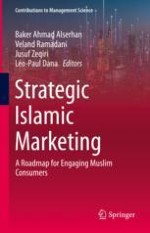2022 | OriginalPaper | Chapter
Halal Blockchain Technology Application: A Consumer Confidence and Competitive Advantage
Author : K. Noorliza
Published in: Strategic Islamic Marketing
Publisher: Springer International Publishing
Activate our intelligent search to find suitable subject content or patents.
Select sections of text to find matching patents with Artificial Intelligence. powered by
Select sections of text to find additional relevant content using AI-assisted search. powered by
